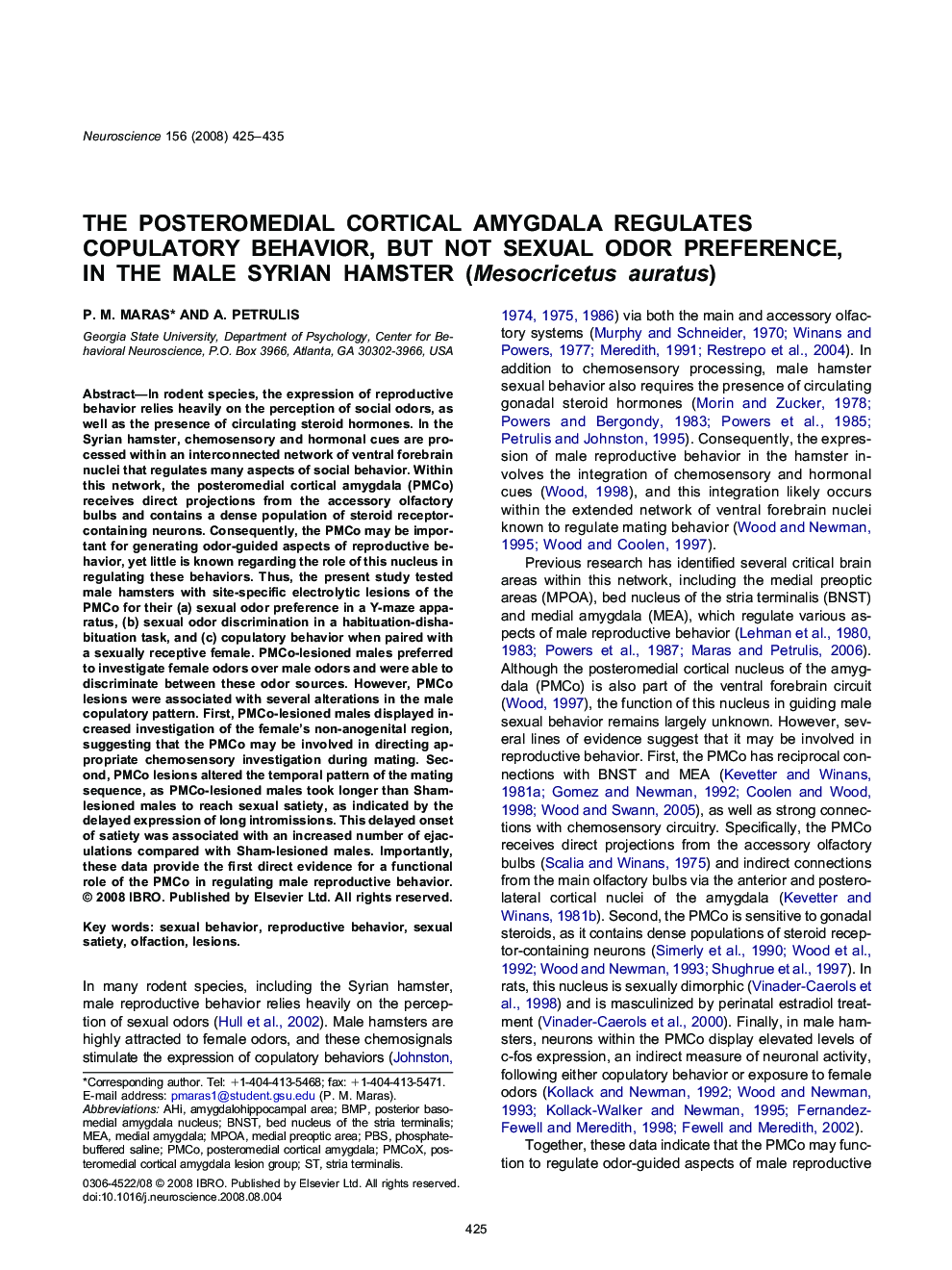| Article ID | Journal | Published Year | Pages | File Type |
|---|---|---|---|---|
| 4340324 | Neuroscience | 2008 | 11 Pages |
In rodent species, the expression of reproductive behavior relies heavily on the perception of social odors, as well as the presence of circulating steroid hormones. In the Syrian hamster, chemosensory and hormonal cues are processed within an interconnected network of ventral forebrain nuclei that regulates many aspects of social behavior. Within this network, the posteromedial cortical amygdala (PMCo) receives direct projections from the accessory olfactory bulbs and contains a dense population of steroid receptor-containing neurons. Consequently, the PMCo may be important for generating odor-guided aspects of reproductive behavior, yet little is known regarding the role of this nucleus in regulating these behaviors. Thus, the present study tested male hamsters with site-specific electrolytic lesions of the PMCo for their (a) sexual odor preference in a Y-maze apparatus, (b) sexual odor discrimination in a habituation-dishabituation task, and (c) copulatory behavior when paired with a sexually receptive female. PMCo-lesioned males preferred to investigate female odors over male odors and were able to discriminate between these odor sources. However, PMCo lesions were associated with several alterations in the male copulatory pattern. First, PMCo-lesioned males displayed increased investigation of the female's non-anogenital region, suggesting that the PMCo may be involved in directing appropriate chemosensory investigation during mating. Second, PMCo lesions altered the temporal pattern of the mating sequence, as PMCo-lesioned males took longer than Sham-lesioned males to reach sexual satiety, as indicated by the delayed expression of long intromissions. This delayed onset of satiety was associated with an increased number of ejaculations compared with Sham-lesioned males. Importantly, these data provide the first direct evidence for a functional role of the PMCo in regulating male reproductive behavior.
